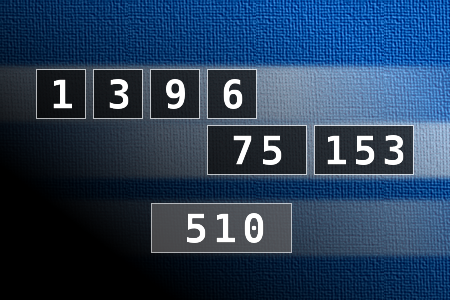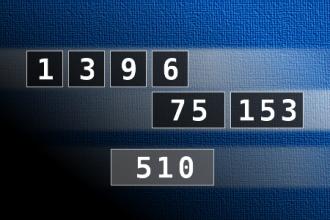Calculate the number 510
NUMBERMANIA: Calculate the number 510 using numbers [1, 3, 9, 6, 75, 153] and basic arithmetic operations (+, -, *, /). Each of the numbers can be used only once.Correct answers: 20
The first user who solved this task is Djordje Timotijevic.
#brainteasers #math #numbermania


